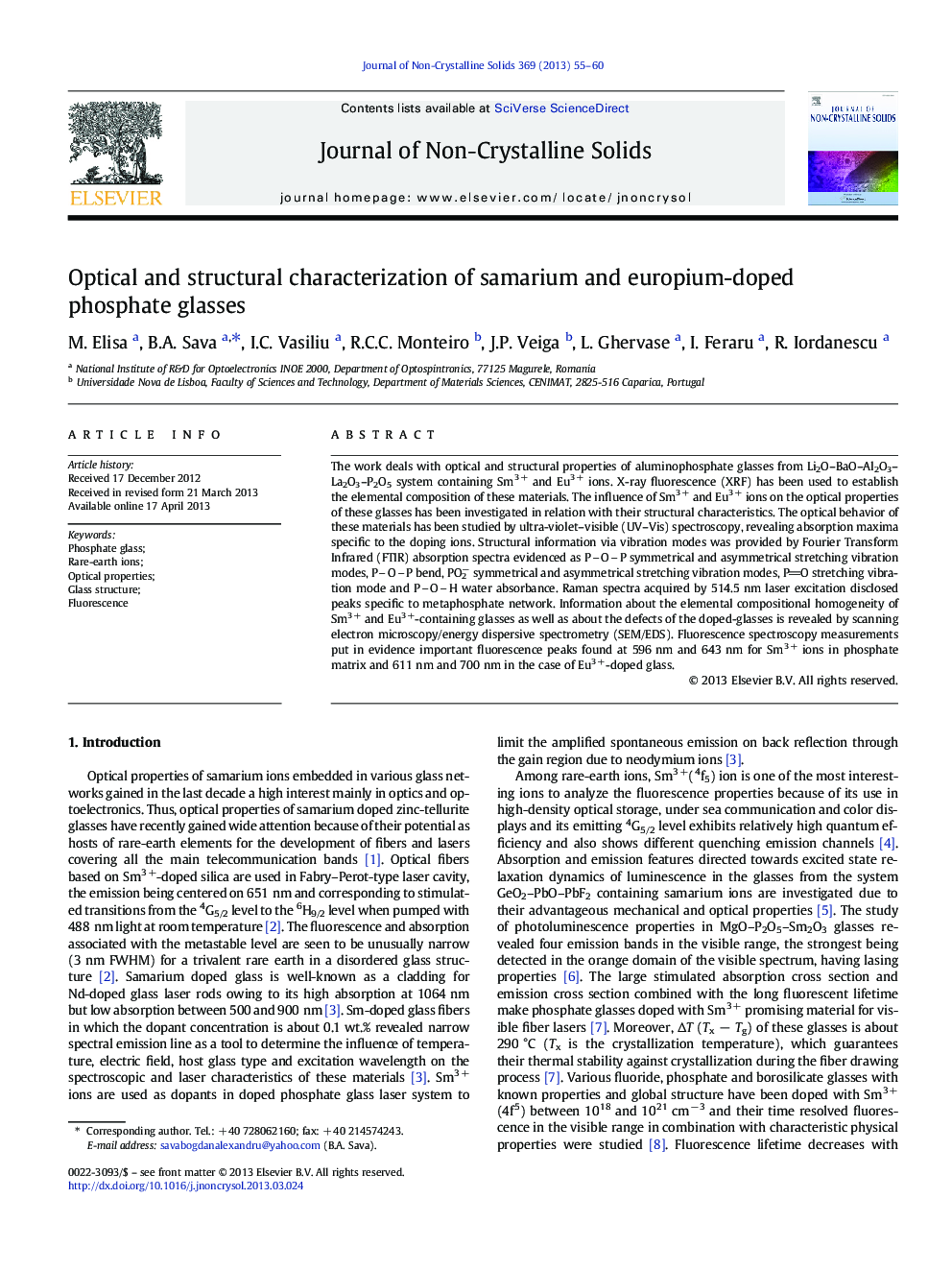| Article ID | Journal | Published Year | Pages | File Type |
|---|---|---|---|---|
| 1481380 | Journal of Non-Crystalline Solids | 2013 | 6 Pages |
•New complex compositions of Sm and Eu doped phosphate glasses were prepared.•The vitreous network is mainly formed by metaphosphate chains.•Eu doped glass exhibits fluorescence intensity 5-fold higher than that of Sm doped glass.•The doped phosphate glasses have optical quality for nano-sensors.
The work deals with optical and structural properties of aluminophosphate glasses from Li2O–BaO–Al2O3–La2O3–P2O5 system containing Sm3 + and Eu3 + ions. X-ray fluorescence (XRF) has been used to establish the elemental composition of these materials. The influence of Sm3 + and Eu3 + ions on the optical properties of these glasses has been investigated in relation with their structural characteristics. The optical behavior of these materials has been studied by ultra-violet–visible (UV–Vis) spectroscopy, revealing absorption maxima specific to the doping ions. Structural information via vibration modes was provided by Fourier Transform Infrared (FTIR) absorption spectra evidenced as POP symmetrical and asymmetrical stretching vibration modes, POP bend, PO2− symmetrical and asymmetrical stretching vibration modes, PO stretching vibration mode and POH water absorbance. Raman spectra acquired by 514.5 nm laser excitation disclosed peaks specific to metaphosphate network. Information about the elemental compositional homogeneity of Sm3 + and Eu3 +-containing glasses as well as about the defects of the doped-glasses is revealed by scanning electron microscopy/energy dispersive spectrometry (SEM/EDS). Fluorescence spectroscopy measurements put in evidence important fluorescence peaks found at 596 nm and 643 nm for Sm3 + ions in phosphate matrix and 611 nm and 700 nm in the case of Eu3 +-doped glass.
